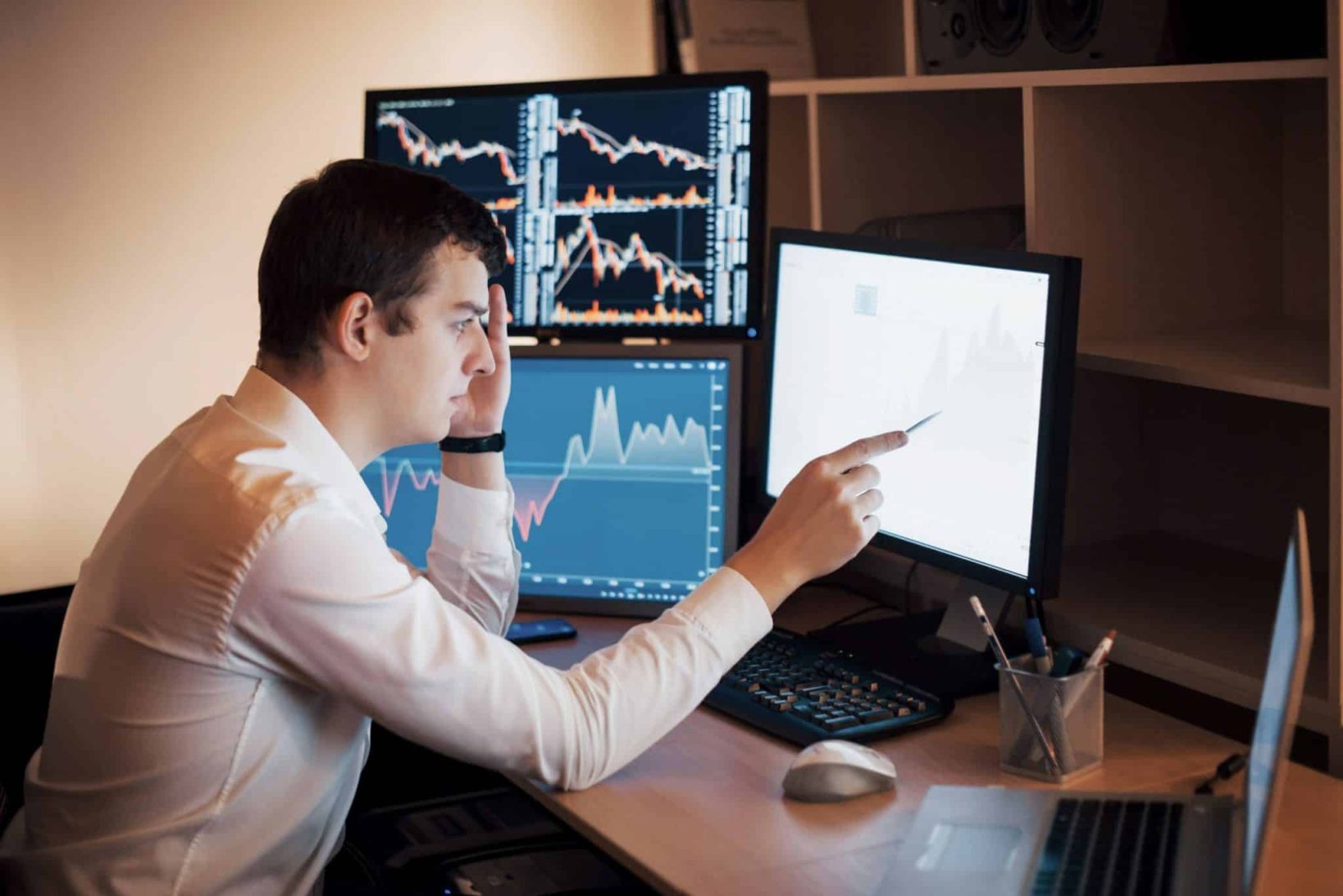The Essentials of Robot Trading in Forex: Benefits and Drawbacks

Robot trading in forex automates the process of buying and selling currencies, allowing for continuous market engagement without human intervention. These robots use algorithmic strategies to execute trades based on predefined parameters, aiming to enhance efficiency and consistency. This article will explore how forex trading robots work, their benefits, limitations, and what to consider when using or developing them.
Key Takeaways
Forex trading robots automate trading by executing predefined strategies, improving efficiency and allowing for 24/7 market engagement.
While they offer benefits like emotion-free trading and risk diversification, forex robots can struggle with adaptability to sudden market changes and may rely heavily on the quality of their programming.
Traders should consider the costs associated with forex robots, including purchase fees, ongoing subscription costs, and potential VPS hosting expenses for optimal performance.
Understanding Forex Trading Robots
Forex trading robots are advanced programs. They are created to produce and execute trading signals in the forex markets. These robots execute trades and manage positions autonomously, eliminating the need for human intervention. The primary goal of forex trading robots is to streamline the trading process, making it more efficient and allowing for continuous market engagement.
Automated Programs
Automated programs, also known as automated forex trading robots, are designed to monitor forex markets and execute trades based on predefined parameters. These programs provide suitable trading signals after performing thorough market analysis, significantly enhancing the efficiency of the trading process.
However, the effectiveness of a forex robot is heavily dependent on the quality of its underlying programming, which can make or break its success.
Algorithmic Trading Strategies
Algorithmic trading strategies are at the core of forex trading robots. These strategies involve analyzing market data to make informed trading decisions and optimize performance. Forex robots can implement a variety of strategies, such as trend following, mean reversion, and momentum trading, to maximize efficiency and consistency in trading outcomes.
Technical and Fundamental Analysis
Forex trading robots operate by continuously analyzing market data to identify trading opportunities. These robots are designed to analyze market trends and patterns, determining ideal moments for entering or exiting trades.
News trading bots, a specific type of forex robot, utilize economic indicators and other news events to predict future market movements, thereby enhancing the decision-making process.
How Forex Trading Robots Work
Understanding the mechanics of forex trading robots is crucial for leveraging their full potential. These bots are software applications that automate the execution of trading strategies in the forex market, significantly improving efficiency by processing information faster than humans.
They can be integrated with online trading platforms like MetaTrader, allowing for seamless automated trading on a trading platform.
Signal Generation
Signal generation is a critical function of forex trading robots. These bots analyze price trends in the forex market to assist traders in making buy or sell decisions. They utilize various algorithmic strategies to determine optimal entry and exit points for trades, leveraging both technical indicators and fundamental data to forecast market movements.
Trade Execution
Once a trading signal is generated, forex robots automatically execute trades through integrated trading platforms. Arbitrage bots, for example, can execute trades within milliseconds to exploit fleeting price discrepancies across platforms.
This rapid execution capability is one of the key advantages of using forex trading robots.
Risk Management
Risk management is a crucial aspect of forex trading, and many forex trading robots come equipped with built-in risk management features. These robots implement strategies such as setting predefined stop-loss and take-profit levels to safeguard profits and limit losses.
Other features may include limits on potential losses, enhancing overall trading safety and protecting investments.
Types of Forex Trading Robots

There are various types of forex trading robots, each designed for specific trading strategies and functionalities. These include scalping bots, arbitrage bots, and news trading bots, among others. Understanding the differences between these types can help traders choose the right robot for their specific needs.
Scalping Bots
Scalping bots are designed to execute numerous trades rapidly to seize small profit opportunities. These bots are programmed to execute high-frequency trades, capitalizing on minor price changes throughout the day.
Often, they use a candlestick pattern strategy, focusing on sequences of consecutive price movements to initiate trades.
Arbitrage Bots
Arbitrage bots are specialized trading robots that exploit pricing inefficiencies between different brokers. These bots identify discrepancies in the price of the same financial instrument across multiple markets, allowing traders to make profits through rapid buying and selling.
News Trading Bots
News trading bots are designed to use economic news releases to anticipate market movements. They generate trading signals based on the impact of economic news releases on market prices.
These bots often incorporate a built-in news calendar feature that helps track relevant market events effectively.
Benefits of Using Forex Trading Robots
Forex trading robots offer several key benefits that can enhance trading performance. These include increased efficiency, emotion-free trading, and diversification of trading strategies.
Increased Efficiency
One of the main advantages of using forex trading robots is their ability to automate the trading process, allowing for continuous trading over 24 hours. Forex robots can process market data and execute orders much quicker than human traders, significantly enhancing trading efficiency.
Automate trading tasks improves response times to market changes and accelerates trade execution.
Emotion-Free Trading
Forex trading bots help remove the emotional element from trading decisions. Executing trades based on predefined rules, these robots remove emotions from the equation, resulting in more consistent outcomes.
This discipline contributes to enhanced overall trading performance.
Diversification
Utilizing various forex trading robots allows traders to spread their investments across different strategies, which can help mitigate overall risk. Employing multiple currency pairs with forex bots allows traders to diversify their strategies and manage risk more effectively.
This approach enhances risk management and maximizes trading opportunities.
Drawbacks and Limitations of Forex Trading Robots
Despite their advantages, forex trading robots also have certain drawbacks and limitations. These include a lack of adaptability, dependence on programming quality, and the risk of over-reliance on automation.
Lack of Adaptability
Forex robots may struggle to adapt quickly to sudden market changes or unusual conditions, making them less reliable in volatile environments. The effectiveness of a forex robot is heavily dependent on the quality of its programming, which may not account for unexpected market scenarios.
Programming Quality
High-quality programming is crucial for the successful operation of forex trading robots. The efficiency of a forex robot is heavily influenced by the quality of its programming and error handling.
Traders should be cautious about buying forex trading robots from companies that may sell ineffective trading systems.
Over-Reliance on Automation
These robots often struggle to adapt to sudden market fluctuations because of their dependence on established strategies. Traders who depend solely on automated systems may overlook critical market insights and personal analysis, putting them at a disadvantage.
Maintaining a balance between automated trading and personal market evaluations is crucial for successful trading.
Developing Your Own Forex Trading Robot

Developing a custom forex trading robot can streamline your trading process by aligning it with your specific strategies.
This section provides guidance on how to develop your own trading robot.
Choosing a Platform
Popular platforms like MetaTrader provide robust environments for developing and testing custom trading robots. Developing custom forex trading robots involves understanding market strategies and coding them into a platform like MetaTrader.
Costs associated with these platforms may include one-time purchase fees or subscription fees based on the service.
Backtesting Strategies
Effective backtesting is crucial for validating automated trading strategies against various market conditions. Backtesting requires using clean historical data and appropriate timeframes to evaluate a trading robot’s performance.
This process helps ensure that the robot can perform well in real-market scenarios.
Continuous Monitoring and Optimization
Monitoring results and making adjustments is crucial for traders using automated systems. Regular assessments of trading outcomes help in refining strategies and enhancing performance.
Automation through forex robots allows traders to focus on strategy development rather than repetitive tasks.
Costs Associated with Forex Trading Robots
Understanding the costs associated with forex trading robots is essential for making informed decisions. These costs can vary widely based on the type of robot and the services required.
Purchase and Subscription Fees
Many forex trading robots are available for purchase directly from licensed online sources. Subscription models for premium forex trading robots are typically available on a monthly or annual basis.
Ongoing costs for running a forex trading robot include VPS hosting, which typically ranges from $10 to $100 per month. Maintenance and updates for trading bots can range from $500 to $5,000 annually.
Additional Expenses
In addition to the costs of acquiring or subscribing to a forex trading robot, traders may incur other expenses essential for optimal trading performance. Using a Virtual Private Server (VPS) allows for continuous operation of trading algorithms, minimizing downtime and latency, which can significantly enhance trading outcomes.
Using Forex Robots for Cryptocurrency Trading
Forex robots can also be used for cryptocurrency trading, leveraging automated trading systems to operate in this dynamic market.
Adapting Forex Bots for Crypto
Existing forex trading robots can be modified to implement strategies suitable for the unique characteristics of cryptocurrency markets. Customization of forex bots for crypto trading involves integrating real-time data feeds specific to cryptocurrency prices.
Market Volatility
Cryptocurrency markets experience significant price fluctuations, which can affect the performance of automated trading strategies. The increased volatility in cryptocurrency markets necessitates that automated trading strategies be adaptable to sudden market changes.
These higher volatility levels compared to traditional forex markets can impact the effectiveness of trading bots, requiring more sophisticated algorithms and real-time adjustments.
Summary
Forex trading robots offer a range of benefits, from increased trading efficiency and emotion-free trading to the ability to diversify strategies. However, they also come with certain drawbacks, such as a lack of adaptability and the need for high-quality programming. Developing your own forex trading robot can provide a tailored solution, but it requires careful planning, backtesting, and continuous optimization. Additionally, costs associated with purchasing, subscribing, and maintaining these robots can add up. For those interested in cryptocurrency trading, forex robots can be adapted to handle the unique challenges of this market. By understanding both the benefits and limitations, traders can make informed decisions and potentially enhance their trading success.
Frequently Asked Questions
What are forex trading robots?
Forex trading robots are automated programs designed to execute trades in the forex market based on specific criteria. They help traders by handling trades without the need for constant monitoring.
How do forex trading robots generate trading signals?
Forex trading robots generate trading signals by analyzing market data with algorithms that pinpoint the best times to enter and exit trades. This process helps traders make informed decisions quickly.
What are the main benefits of using forex trading robots?
Using forex trading robots can enhance your trading efficiency, eliminate emotional decision-making, and allow you to diversify your strategies effortlessly. These advantages can help streamline your trading experience.
What are the potential drawbacks of using forex trading robots?
Using forex trading robots can be risky because they may struggle to adapt to sudden market shifts and heavily depend on how well they’re programmed. It’s important not to rely on them too much, as they may not always deliver the results you expect.
Can forex trading robots be used for cryptocurrency trading?
Absolutely, forex trading robots can be used for cryptocurrency trading with some tweaks to their algorithms to handle the unique traits and volatility of the crypto market. Just make sure they’re properly adjusted for the differences!